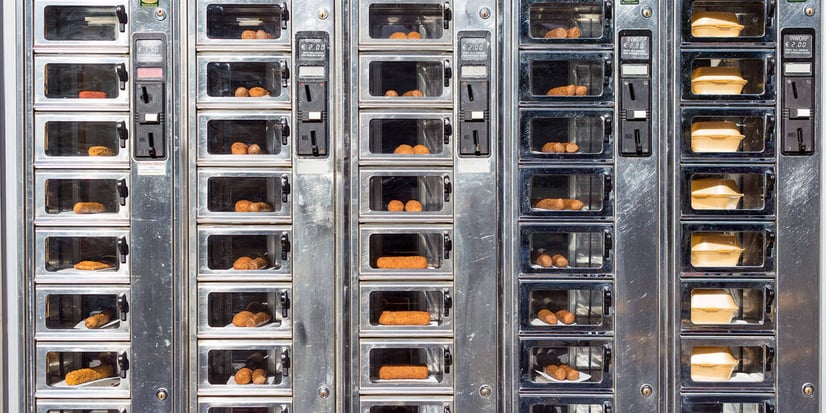LS Retail | 26 October 2015
Want to improve your customer service? Install self-service machines

The Millennial generation
The Millennial generation is the generation of younger customers who are comfortable using technology in their daily life. They have grown up using smartphones and Google search as a part of their daily life. These customers figure things out by trying them out, are not afraid of making mistakes and usually have a positive mind-set towards collaboration, with a “we can fix it together” attitude. This hands-on new generation is the perfect starting point for implementing more self-service initiatives in retail and hospitality. According to a recent global survey, 22% of people already use self-checkout; nearly two-thirds (65%) are willing to use it in the future [Tweet this]. The appropriate combination of self-service and human service - when people actually need assistance - can greatly improve the overall shopping experience.Self-service in traditional retail…
Self-service systems have been around for a while in retail stores. Through these terminals, customers can scan barcodes, purchase and pay with different methods - by debit and credit cards, cash and sometimes gift cards. There are some special features, depending on the products purchased. In grocery stores, the machines may include a scale if customers are required to identify and weigh fruits and vegetables. Some stores also offer portable barcode scanners that allow customers to scan items while shopping. Although these hand-held terminals have been around for a while, their use is often limited to members-only, e.g. in co-operative stores.… and in hospitality
In fast food restaurants, self-service systems function a bit differently than in retail, as the product selection is usually fixed and customers select the items or menus from a touch-based interface. Self-service systems in restaurants can be deployed on smartphones or tablets. A casual dining or fast food restaurant may provide tablets on every table for ordering, or offer an app that customers can download on their smartphones and use as a self-service system. Customers would then be able to pay either through their account (for example using an online wallet like PayPal), or straight to the waiter/cashier in the restaurant. To be effective, the system should provide a smooth workflow, enabling the customer to easily select the menu and add modifiers before making a payment.Independence and empowerment
Self-service machines shift the focus of the traditional cashier from scanning and receiving payments to giving advice on products and promotions. When retailers evaluate rolling out self-service systems they should also consider whether they may be used to deter staff fraud and shoplifting. Self-service encourages customers to take more responsibility in the shopping process, thus collaborating with the retailer. Scanning your basket may also be a small adventure. My personal experience includes visiting the local outlet of a large furniture retailer where my kids (7 and 9) love to operate the self-service systems, usually only with minor help from mum and dad.LS Nav: a powerful self-service system
LS Nav is one of the most flexible POS solutions on the market, offering customers the possibility to use the same application for traditional POS terminals, self-service systems and Windows-based tablets. In addition, it can be coupled with the LS Omni multi-channel solutions that run on almost all smartphones and tablets. As LS Nav is both flexible and mostly open-source, LS Retail partners and customers can tailor it to fit exact requirements. This is, for example, the case with my local furniture store, running the same LS Nav application on the POS terminals, the self-service systems and in the restaurant. Some of the elements that make LS Nav an ideal platform for self-service systems are:- Embedded support for videos and pictures (e.g. instruction videos) anywhere on the POS interface, making it easy to tailor the application for almost any type of retail.
- Macros that allow the retailer to define a smooth workflow, for example when selling amenities or switching screens in a restaurant.
- Sophisticated loyalty system that allows for various member-related offers. Customer can identify themselves using RFID scanner, a magnetic card or a QR code scanned from the mobile phone.
- Mobile loyalty app that customers can download to their smartphone.
- Rich functionality, combined with an intuitive interface help the retailer to provide the same type of offers and promotions on a self-service terminal as on a regular POS.
Featured eBook